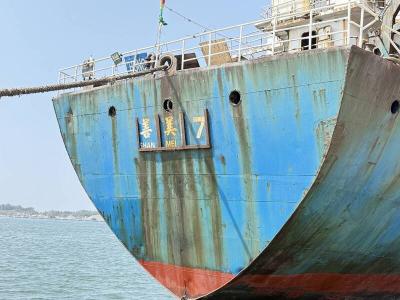A new form of avian flu vaccine could soon be available to combat the H5N1 virus in the event of a global pandemic, doctors said in Taipei yesterday. The results of a phase III study of the immunogenicity of an H5N1 pre-pandemic influenza vaccine were presented yesterday at the Annual Meeting of Taiwan Society of Pulmonary and Critical Care.
Led by Yang Pan-chyr (楊泮池), dean of National Taiwan University College of Medicine, Taiwan was one of the four Asian countries to participate in the research study.
The team sought to determine whether a new form of avian flu vaccine with an adjuvant added would be more effective than current ones, said Chang Shan-chwen (張上淳), a professor and physician of infectious diseases at National Taiwan University Hospital.
Four hundred healthy Taiwanese between 18 and 58 years of age participated in the study, which has continued for more than a year, Chang said.
Three hundred and twenty people were inoculated with the vaccine with an AS03 adjuvant, while 81 acted as the control group and were inoculated with an adjuvant-free vaccine.
The results showed that more than 90 percent of those who were given the vaccine with an AS03 adjuvant developed immunity against the H5N1 virus.
Even if the virus had developed into a variant strain, 45.6 percent of people retained their immunity, Chang said.
“Because we are not sure if the H5N1 strain would develop into a variant strain capable of sparking a pandemic by human-to-human transmission, it is critical that the flu vaccine provide immunity against different strains,” he said.
In the event that H5N1 caused a pandemic, 45.6 percent of those vaccinated would still be immune to the new strain, which would aid in controlling the disease during the four to six weeks it would take for a new vaccine targeting the new strain to be developed, he said.
Clinical trial data also showed that by using the AS03 adjuvant, only 3.8 micrograms of antigen would be necessary to develop immunity compared to the 15 micrograms currently required for seasonal flu vaccines.
This means that “more people would be able to benefit from the vaccine,” Chang said.

An undersea cable to Penghu County has been severed, the Ministry of Digital Affairs said today, with a Chinese-funded ship suspected of being responsible. It comes just a month after a Chinese ship was suspected of severing an undersea cable north of Keelung Harbor. The National Communications and Cyber Security Center received a report at 3:03am today from Chunghwa Telecom that the No. 3 cable from Taiwan to Penghu was severed 14.7km off the coast of Tainan, the Ministry of Digital Affairs said. The Coast Guard Administration (CGA) upon receiving a report from Chunghwa Telecom began to monitor the Togolese-flagged Hong Tai (宏泰)

A cat named Mikan (蜜柑) has brought in revenue of more than NT$10 million (US$305,390) for the Kaohsiung MRT last year. Mikan, born on April 4, 2020, was a stray cat before being adopted by personnel of Kaohsiung MRT’s Ciaotou Sugar Refinery Station. Mikan was named after a Japanese term for mandarin orange due to his color and because he looks like an orange when curled up. He was named “station master” of Ciaotou Sugar Refinery Station in September 2020, and has since become famous. With Kaohsiung MRT’s branding, along with the release of a set of cultural and creative products, station master Mikan

RISING TOURISM: A survey showed that tourist visits increased by 35 percent last year, while newly created attractions contributed almost half of the growth Changhua County’s Lukang Old Street (鹿港老街) and its surrounding historical area clinched first place among Taiwan’s most successful tourist attractions last year, while no location in eastern Taiwan achieved a spot in the top 20 list, the Tourism Administration said. The listing was created by the Tourism Administration’s Forward-looking Tourism Policy Research office. Last year, the Lukang Old Street and its surrounding area had 17.3 million visitors, more than the 16 million visitors for the Wenhua Road Night Market (文化路夜市) in Chiayi City and 14.5 million visitors at Tainan’s Anping (安平) historical area, it said. The Taipei 101 skyscraper and its environs —

Actor Lee Wei (李威) was released on bail on Monday after being named as a suspect in the death of a woman whose body was found in the meeting place of a Buddhist group in Taipei’s Daan District (大安) last year, prosecutors said. Lee, 44, was released on NT$300,000 (US$9,148) bail, while his wife, surnamed Chien (簡), was released on NT$150,000 bail after both were summoned to give statements regarding the woman’s death. The home of Lee, who has retreated from the entertainment business in the past few years, was also searched by prosecutors and police earlier on Monday. Lee was questioned three